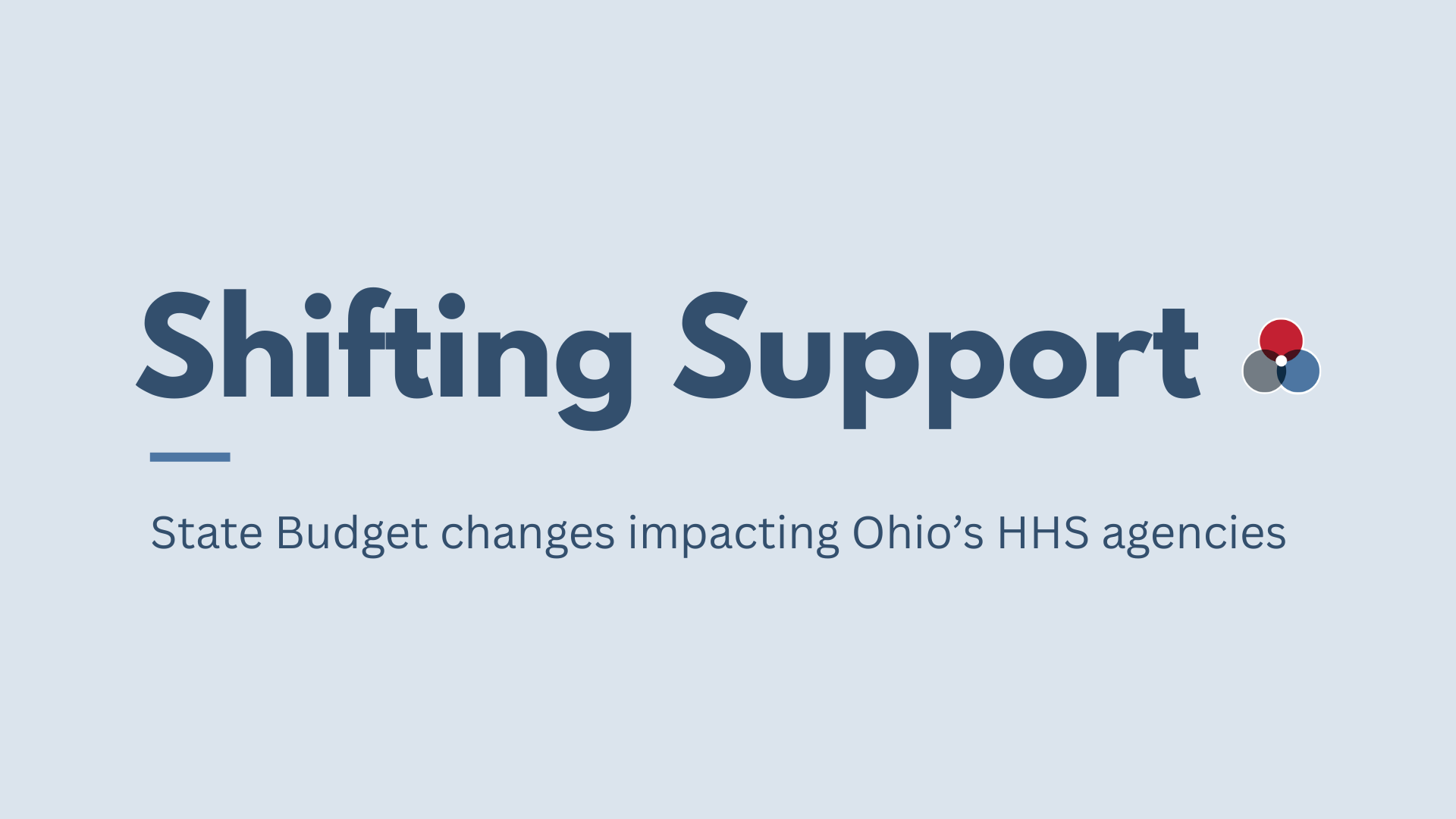By: Patrick Kanary, Consultant
Why OhioRISE
The Ohio Department of Medicaid has stated, “We want to do better for the people we serve.” This includes an estimated 50-60,000 of Ohio’s most vulnerable children, youth and their families. To accomplish this, a proposed new managed-care approach, OhioRISE (Ohio Resilience through Integrated Systems and Excellence)[1], will focus on a population of children and youth with serious behavioral health needs, who are often involved in multiple public youth-serving systems, and their families. Many of these children and youth are often referred to as “multisystem” youth or MSY. These are youth and families for whom more traditional approaches to treatment have not been adequate to meet their multiple and complex needs. Their treatment and support requirements transcend any one public system, including behavioral health, child protection services, juvenile justice, health, developmental disabilities and education.
We want to do better for the people we serve.
For the past few years, MSY and their specialized needs have received attention at both the legislative and youth-serving systems levels. (See previous Community Solutions briefs on MSY.) The work of the 2016 MSY Legislative Committee[2] resulted in a set of recommendations designed to improve the outcomes for these youth and their families. Under the direction of Sarah LaTourette, Director of Ohio Family and Children First, an MSY Action Plan[[3]](https://www.fcf.ohio.gov/Portals/0/Home/MSY TA Funding Requests/MSY Action Plan report%5FFINAL.pdf?ver=2020-01-31-180133-463) was developed based on those recommendations. This Action Plan is consistent with the goals of the OhioRISE plan.
What will OhioRISE accomplish?
OhioRISE will support the development of a single managed-care plan for the OhioRISE youth population and their families. The plan will ensure the following: appropriate assessments as to intensity of need; individualized plans of care that draw on an array of in-home and community services; and coordination of these services across various community providers, agencies and systems. Both qualitative and quantitative data reveal there is an ‘intersection’ of youth who need a greater array of services and care coordination than the current Medicaid plan provides. OhioRISE is designed to address the behavioral health treatment and support needs of this group of Ohio’s children, youth and their families, irrespective of any prior or concurrent involvement in any of the public child-serving systems.
The ultimate goal of OhioRISE is to keep youth in their homes, communities, and schools.
The ultimate goal of OhioRISE is to keep youth in their homes, communities, and schools by assessing for and delivering the appropriate intensity of services needed, thus reducing unnecessary out-of-home placement and potential custody relinquishment. Much of the MSY advocacy efforts focused on the need to end custody relinquishment when it is based solely on the ability to pay or lack of access to the needed services. State and local level partnering across the juvenile justice, behavioral health, developmental disabilities, child welfare, and education systems, will further this goal.
ODM and its system partners have chosen the Child and Adolescent Needs and Strengths (CANS)[4] as their system-wide assessment tool. Since the children, youth, and families eligible for OhioRISE will typically be involved in multiple public systems, it is important to have a single assessment tool that supports communication across those systems. ODM, JFS, DODD, and other state agency partners are working with Dr. John Lyons, the developer of the CANS, to create the Ohio version of the CANS (Ohio CANS) specifically tailored to meet the needs of OhioRISE. The Ohio CANS will be utilized for standardized assessment, treatment plan development, and for intensity of care determinations. A significant component of this process will be systems-wide use of the CANS to determine the intensity of care and guide the treatment plan development. The CANS will also be a tool for ODJFS for the Qualified Residential Treatment Facility (QRTF) level of care, and the DODD will use it when assessing children and youth for their Intermediate Care Facilities with behavioral health services add-on.
Ohio Medicaid covers a range of community and residential behavioral services that serve thousands of Ohio youth and families.
Who is eligible for OhioRISE?
Key to OhioRISE is enhancing Ohio’s current behavioral health services with an array specifically intended for these children, youth, and families. Like many states, Ohio has made efforts over time to improve the access and availability of such services. At present, Ohio Medicaid covers a range of community and residential behavioral services that serve thousands of Ohio youth and families. Under the proposed OhioRISE plan, eligible youth are (but not limited to)[5]:
- Enrolled in Medicaid (managed care and fee for service)
- Up to age 21
- In need of significant behavioral health services
- Meet functional needs criteria as assessed by the Child and Adolescent Needs and Strengths (CANS)ODM estimates up to 50,000-60,000 children, youth, and their families may be enrolled by the end of year one.
What are the OhioRISE services and supports?
Currently, five different MCO plans in Ohio provide Medicaid behavioral and physical health services for children, youth, and their families[6]. OhioRISE seeks to create a specialized managed-care plan with a single vendor for this multisystem involved population. It is anticipated that a single-plan approach will increase access and efficiency while providing quality care.
ODM estimates up to 50,000-60,000 children, youth, and their families may be enrolled by the end of year one.
OhioRISE will use the Prepaid Inpatient Health Plan (PIHP)[7]) model, which allows for a capitated approach for creating, managing, and reimbursing the approved care plan. This approach will require the vendor to ensure that the individual care plan delivers the ‘right’ service at the ‘right time’ for the ‘right cost.’ Newly created Care Management Entities (CME) will be responsible for the development of individualized plans of care using a wraparound child and family team approach and the provision of care coordination in partnership with providers, youth, and families. It is this coordinated care plan whereby children, youth, and families can move seamlessly in and out and across services and systems. OhioRISE will also employ a federal waiver (1915c) through the Center for Medicaid and Medicare Services (CMS) that allows ODM to enroll children and youth who are most at risk for custody relinquishment.
The proposed array of covered services is quite robust and based on the data regarding the treatment and support needs of these children, youth, and their families. In addition to the current behavioral health services under Medicaid[8], there are several key services to be added or expanded with OhioRISE:
- Intensive care coordination using High-Fidelity Wraparound (HFWA)
- Moderate care coordination using a Wraparound-informed approach
- Mobile Response and Stabilization Services (MRSS)
- Intensive Home-Based Treatment (IHBT) Services
- Psychiatric residential treatment facilities (PRTFs)These newly added or expanded services are a shift from lower intensity and out of home focus to more intensive community and home-based services.
How is OhioRISE collaborative?
Given this significant intersystem approach, it is clear that the Governor’s Office of Children’s Initiatives, Ohio Family and Children First, and the respective state and local agencies, will continue partnering in further planning, implementing, and evaluating OhioRISE. A shared governance approach will be used to oversee the development and implementation of OhioRISE.
A shared governance approach will be used to oversee the development and implementation of OhioRISE.
One partnership, among others, will be with the Family First Prevention Services Act (FFPSA)[9] initiative within the Department of Job and Family Services. FFPSA allows the child protection system to redirect Title IV-E funds that were previously designated for only out-of-home placements to an array of evidence-based community interventions designed to preserve and support families and limit out-of-home placement. These interventions are compatible with many of the services under OhioRISE. These funds, while they cannot supplant Medicaid funding, can be used for non-Medicaid-eligible services and individuals. This is a major change in how IV-E funds can be used and therefore a strategic opportunity to link FFPSA and OhioRISE.
Each state must submit their FFPSA plans to the U.S. Department of Health and Human Services, the Administration on Children and Families.
Each state must submit their FFPSA plans to the U.S. Department of Health and Human Services, the Administration on Children and Families (ACF). The federal deadline for implementation is October 1, 2021, with Ohio’s’ plan scheduled to move forward in April 2021. Ohio’s plan, developed through an intensive collaborative stakeholder process, will identify the evidence-based services and supports eligible for funding. A number of services under OhioRISE and FFPSA are already a part of Ohio’s system of care, and there is potential for further development of existing and potential services.
How will OhioRISE be implemented?
The implications for the implementation of OhioRISE are significant. Seeking a qualified MCO, defining a precise population of focus, creating and enhancing a discrete menu of covered services, implementing an assessment tool, and assuring effective care management—all the while managing cost and quality—is daunting. This is why a shared governance and “all systems on board” approach is required. To this end, OhioRISE proposes a “shared governance” approach to management. According to ODM leadership, shared governance goes beyond collaboration and requires responsibility and accountability. The proposed structure asks the following of each participating system: What do these youth need and what do we bring to the table to build a Medicaid system that works for this population? Achieving the desired seamless system of care will require the expertise and guidance from the respective partners.
Shared governance goes beyond collaboration and requires responsibility and accountability
A notable feature of the implementation of OhioRISE is the active involvement of the selected vendor in the development of certain aspects of the structure. ODM has stated that it seeks an expert partner to help with development and implementation of OhioRISE. In addition to a diverse Advisory Council, three workgroups will be convened to assist with implementation: Services; Eligibility and Care Coordination; and Implementation. These workgroups will be comprised of members of the Advisory Council as well as a diverse group of volunteer participants.
While Medicaid plans are quite unique to each state, Ohio can look to some other states’[10] approaches. OhioRISE is based in a system of care (SOC) framework that focuses on community-based services, care coordination, reduction of out-of-home placements, and identification and implementation of evidence-based services.
Another key collaborative effort across the systems, will be the implementation of a Child and Adolescent Behavioral Health Center of Excellence (COE) through a contract with the Ohio Department of Mental Health and Addiction Services (OMHAS). According to OMHAS, the role of the COE will be to “assist the State in system transformation efforts by providing the orientation, training, coaching, mentoring, and other functions/supports needed by the provider network in order to build and sustain capacity in delivering evidence-based practices to fidelity within a system of care framework.” The role of the COE will support the further advancement of the child, youth, and family behavioral health field and will be a resource to the efforts of OhioRISE and FFPSA.
What are the next steps?
Per the ODM deadline for applications, four MCOs have submitted OhioRISE proposals:
- Aetna Better Health Inc. dba Aetna Better Health of Ohio
- Beacon Health Options of Ohio, Inc
- Kids’ CareAlliance Co.
- Magellan of Ohio, Inc.These vendors will participate in oral presentations and a final selection by ODM is expected by late February 2021.
[1] https://managedcare.medicaid.ohio.gov/wps/portal/gov/manc/managed-care/ohiorise/ohiorise
[2]https://www.pcsao.org/perch/resources/PressRelease/FinalReportandRecommendations.pdf
[4] https://praedfoundation.org/tools/the-child-and-adolescent-needs-and-strengths-cans/
[5] https://managedcare.medicaid.ohio.gov/wps/portal/gov/manc/managed-care/ohiorise/ohiorise
[6] These plans are being procured with new plans in place by January 2022
[8] https://managedcare.medicaid.ohio.gov/wps/portal/gov/manc/managed-care/ohiorise/ohiorise
[9] https://jfs.ohio.gov/ocf/Family-First.stm
[10] https://www.nashp.org/state-medicaid-managed-care-program-design-for-children-and-youth-with-special-health-care-needs/#tab-id-1








